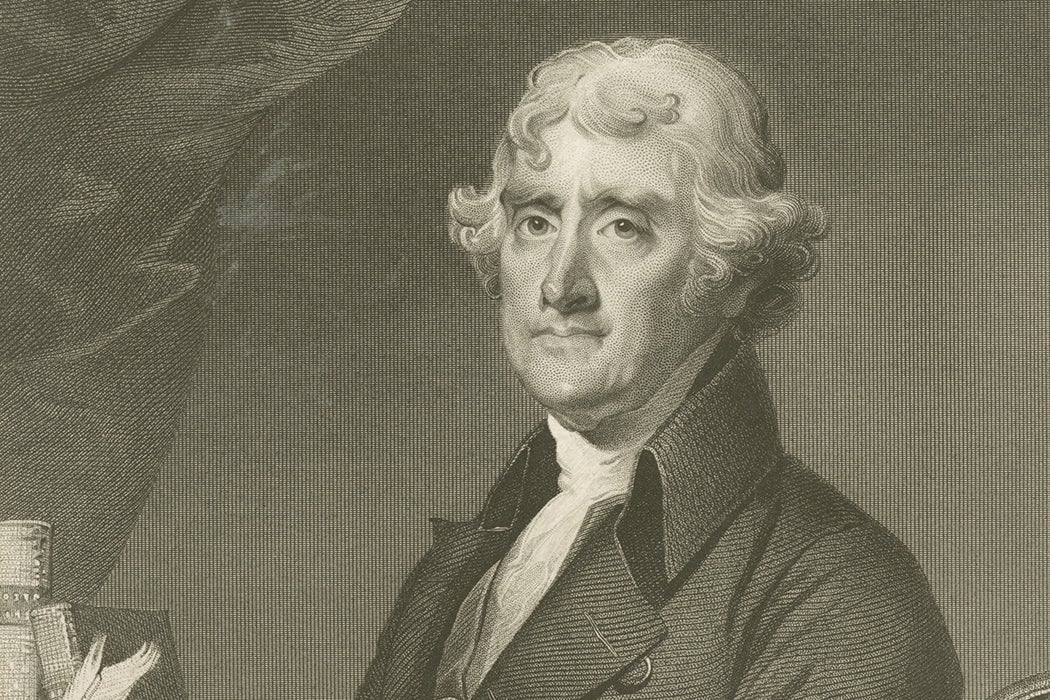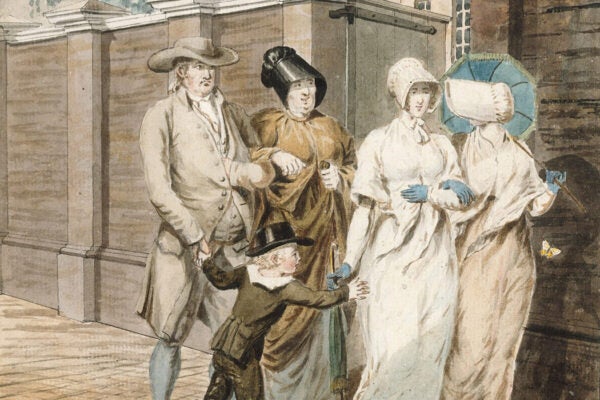In a reformist push to reduce the widespread use of the death penalty in the new Commonwealth of Virginia, Thomas Jefferson drafted “A Bill for Proportioning Crimes and Punishments in Cases Heretofore Capital” in 1779. This was Bill 64 of 126 bills put together by Jefferson and the Committee of Revisors to rationalize law after the colonial period. The draft in Jefferson’s hand contains many reasonable reductions of penalties but then comes to a couple of sections that make for bizarre reading today.
Instead of executing those found guilty of “rape, polygamy, or sodomy with man or woman,” Jefferson proposed castration for men and, for women, “cutting thro’ the cartilage of her nose a hole one half inch diameter at the least.”
Jefferson also proposed proportionate maiming for those who intentionally maimed the faces of others. His variation of the eye-for-an-eye system of justice, the lex talionis or law of retaliation, read, “Whosoever on purpose and of malice forethought shall maim another, or shall disfigure him, by cutting out or disabling the tongue, slitting or cutting off a nose, lip or ear, branding, or otherwise, shall be maimed or disfigured in the like sort…”
When this package of bills was finally put before the Assembly in the sessions of 1785–1786, Jefferson was away serving as the US Minister to France. Fifty-six of the Committee of Revisors’ bills were enacted. James Madison reported to Jefferson that Bill 64 lost by one vote. This was because, writes historian Emily Cock, the holdout wanted to “retain horse-stealing as a capital offense.” Or, as Madison summarized, “Our old bloody code is by this event fully restored.”
More to Explore
Puritan True Crime
Little attention has been paid to Jefferson’s curious concentration on marking the face. Cock puts it in the context of “the legal and wider connotations of facial disfigurement that made these proposals coherent in Virginia when they had long ceased elsewhere.”
There was plenty of precedent from medieval Europe and the American colonies. Branding, mutilation, and dismemberment could be applied to both the enslaved and the free in the colonies, where “ear-cropping” was the most frequent disfiguring punishment. Jefferson’s bill was the “result of impressive research on common and statutory laws, preserved in his ample manuscript annotations in modern and Old English, Latin and French,” Cock writes. As Jefferson discovered,
the spectacle, ritual and vigour of corporal and capital punishments played a key role in performance of power by developing states in early modern Europe, and would arguably continue to do so in the fragile Early Republic. Judicial wounds to the face allowed for the ongoing stigmatization of the individual alongside perpetual testimony to the power of authority.
Cock writes that Jefferson, in search of a new “American legal identity,” pushed for a “return to the world of the pre-Norman-conquest Anglo-Saxon, positioning America as the inheritor of this tradition.”
Weekly Newsletter
He was a bit late. The Enlightenment century saw a marked reduction in judicial violence. “Progressive penology” came to emphasize reform rather than retribution: the mind not the body came to be punished. Permanent marking was, after all, permanent—precluding reincorporation into society. The turn towards imprisonment “would significantly decrease or remove corporal and capital punishments from most European and American jurisdictions.”
There was a “rare gap” in Jefferson’s otherwise “exhausting annotations” on corporal punishment when it came to the part about cutting women’s noses. There were plenty of examples of “punitive rhinotomy” from around the world for Jefferson to cite, including nose-slitting as punishment for adulterous women in early modern Britain. In his legal commonplace book, Cock argues, Jefferson connected the “alignment of rhinotomy with female sexual transgressions, their ‘allure’ to men, and the equivalency with male castration,” but he didn’t seem to want to do that publicly.
Cock, who has written a history of the nose in early British medicine, concludes that
[n]either an out-of-the-blue aberration, nor an overlooked hangover from earlier law, Jefferson’s lex talionis approach to facial disfigurement as both a crime and a punishment […] reflected the anxious balance of punishment of body and mind at work in eighteenth-century legal reforms.








